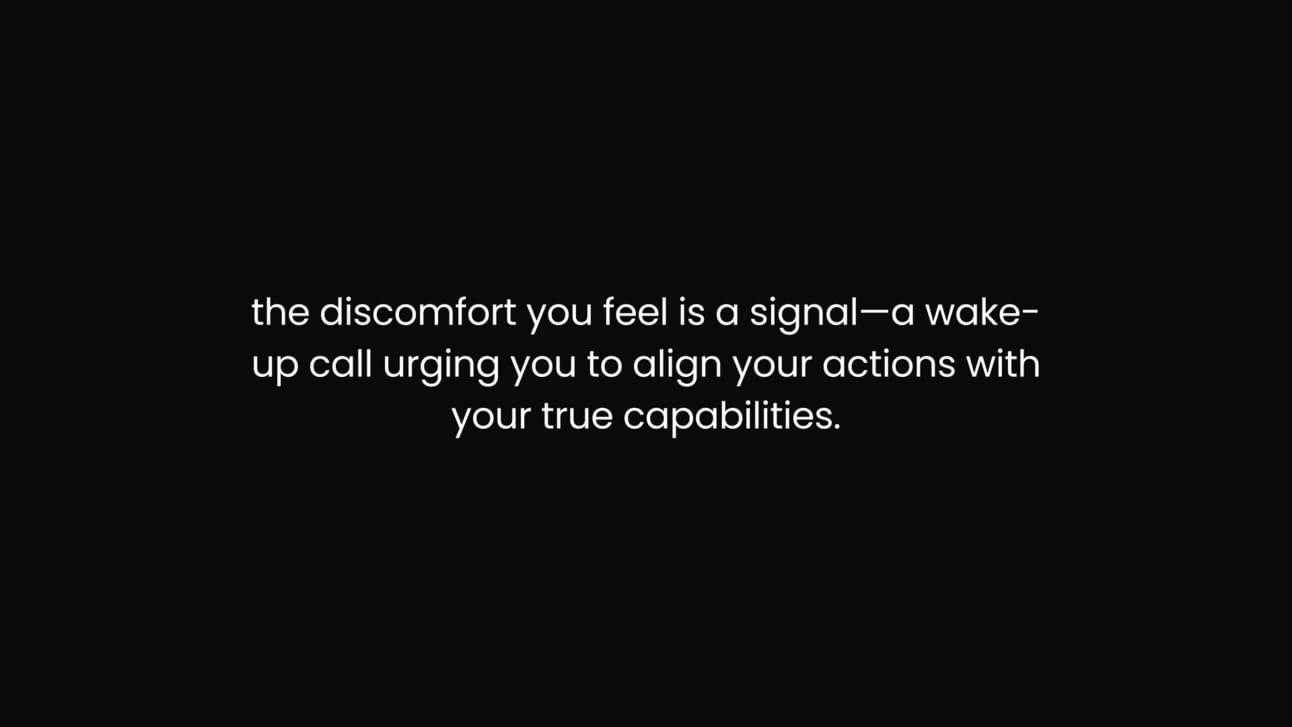- Leonardo Pereira
- Posts
- The Inner Conflict: Why You Feel Terrible and How to Fix It
The Inner Conflict: Why You Feel Terrible and How to Fix It
Daily Leverage Letter #0003

There’s a gnawing feeling in the pit of your stomach—a persistent sense of unease that you can’t quite shake.
You go through the motions of your daily life, but something feels off. You’re not sick, yet you feel terrible.
Deep down, you know the truth: your subconscious is screaming at you, reminding you that you could be doing better.
We’ve all been there.
That overwhelming sense of dissatisfaction, that nagging voice in the back of your mind telling you that you’re not living up to your potential.
It’s not just a passing mood or a fleeting thought—it’s a deep-rooted awareness that something needs to change.
This feeling of inner conflict is your subconscious mind at work.
It knows your true potential, and it’s painfully aware when you’re not reaching it.
The discomfort you feel is a signal—a wake-up call urging you to align your actions with your true capabilities.
Understanding the Source of Your Discomfort
The discomfort you’re experiencing isn’t random.
It’s a clear indication that there’s a disconnect between where you are and where you know you could be.
Cognitive Dissonance: This is the mental stress or discomfort you feel when your actions are not aligned with your beliefs or values. Your mind is constantly comparing your current situation with what it knows you’re capable of, creating tension when there’s a gap.
Unrealized Potential: Your subconscious mind is always aware of your potential. When you’re not living up to it, it sends signals in the form of discomfort, unease, and even anxiety.
Inner Critic: The voice in your head that criticizes you is not your enemy. It’s actually trying to push you toward growth, even if it feels harsh. Understanding this can help you channel that energy into positive change.
Identifying the Areas Where You Could Be Doing Better
The first step to resolving this inner conflict is to identify the areas in your life where you’re falling short of your potential.
Self-Assessment: Take a hard look at your life—your career, relationships, health, and personal growth. Where are you coasting? Where are you avoiding challenges? This is where your discomfort is likely stemming from.
Pinpoint the Gap: Once you’ve identified the areas where you’re not living up to your potential, you can start to understand the gap between your current state and your desired state.
Prioritize Change: Not every area of your life needs an overhaul at once. Prioritize the areas that are causing you the most discomfort and focus on them first.
Aligning Your Actions with Your Potential
Now that you’ve identified where you could be doing better, it’s time to take action.
This is where the real work begins.
Set Clear Goals: Your subconscious knows what you’re capable of, but it’s up to you to define what that looks like in concrete terms. Set clear, actionable goals that align with your true potential.
Create a Plan: A goal without a plan is just a wish. Break down your goals into manageable steps and create a plan to achieve them. This gives your subconscious mind something to work towards, reducing the internal conflict.
Commit to Growth: Growth isn’t always comfortable, but it’s necessary. Commit to pushing yourself out of your comfort zone and into the realm of your true potential.
Reframe Discomfort as a Catalyst for Growth
Discomfort is often seen as something to be avoided, but it can be a powerful catalyst for growth if you reframe it.
Embrace the Struggle: The discomfort you feel is a sign that you’re on the right path. It means you’re pushing your boundaries and challenging yourself to be better.
Use Discomfort as Fuel: Let the discomfort drive you. Instead of seeing it as a negative, view it as the energy you need to propel yourself forward.
Celebrate Progress: Every step you take towards aligning with your potential is a victory. Celebrate your progress, no matter how small, as it’s a sign that you’re moving in the right direction.
Feeling terrible isn’t just about being in a bad mood—it’s your subconscious mind telling you that you could be doing better.
By understanding the source of your discomfort, identifying the areas where you’re falling short, aligning your actions with your potential, and reframing discomfort as a catalyst for growth, you can turn this inner conflict into a powerful force for positive change.
Your subconscious mind is a powerful ally. It knows what you’re capable of, and it won’t let you settle for less.
The next time you feel that nagging discomfort, don’t ignore it.
Use it as a guide, a push to do better, and a reminder that you’re capable of more.
Are you ready to listen to what your mind is telling you?